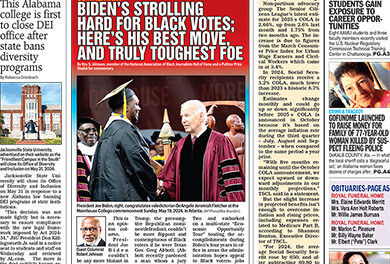15 hours ago
Photo: vizafoto via 123RF
Do you ever wonder where all your money is going? Financial leaks could be to blame for your dwindling bank account. Find out some typical financial leaks and how to avoid them with good financial habits.
What Are Financial Leaks?
Financial leaks are small expenses you often don’t notice until they add up over time. Leaks such as unused subscriptions, paying extra for delivery services, or incurring late fees can build up and lead to overspending. Getting a handle on poor habits like impulsive buying and instilling good habits like routinely checking your subscriptions to make sure you are still using them can help you avoid the consequences of unintentional leaky spending.
Common Financial Leaks
Here are some of the most common financial leak categories and tips for how to monitor them and curb spending.
Subscriptions
You sign up for a streaming service to watch a newly released show and forget to cancel after you binge-watched it in one weekend. That gym membership seemed like good motivation to work out, but you prefer running around your neighborhood. Ad-free music is a nice perk, but when you add up all these subscriptions, you are shocked at the total.
You aren’t alone. A recent CNET survey found that “U.S. adults spend an average of $91 on subscription services each month, and nearly half have signed up for a free trial of a paid subscription and then forgotten to cancel it.” That adds up to more than $1,000 a year in subscriptions.
Keep your subscriptions in check! Review your bank and credit card statements and cancel any that you aren’t using. Monitoring programs like PocketGuard or Experian can track them and alert you. Rocket Money will even cancel subscriptions for you. Are you having a hard time letting go of the subscriptions you enjoy? Try rotating services such as streaming accounts or temporarily canceling them to see if you truly miss them.
Delivery Services
What is more convenient than food, groceries, or household items delivered right to your door? But have you checked how much you spend on these conveniences? According to a recent Lending Tree survey, the average delivery service customer spent $407 a month in 2023, up from $157 in 2021. That is almost $5,000 a year! The online food delivery market is projected to increase from $3.7 billion in 2023 to $90.3 billion by 2030, which could mean more temptations and drains on your wallet if you aren’t careful.
Does your spending on delivery align with your budget and life priorities? Go ahead and treat yourself to some food delivery on occasion, as long as you monitor your spending and keep it within the budget you set. Try meal planning for simple-to-make dinners and be mindful before clicking “buy now” on online purchases.
Wireless Plans
For many of us, staying connected is a costly venture, with the average “American spending $1,342 per year on mobile phone services“. Add in smartwatches, tablets, and other wireless plans, and this expense category can quickly get out of control. Some ways to reduce costs include:
- Research less expensive options.
- Opt for family plans.
- Select data-restricted plans instead of unlimited ones.
- Remove unnecessary devices from wireless plans.

Photo: tinydevil via 123RF
Fees
Fees for overdrafts, late payments, ATM withdrawals, or annually for credit cards can be more than a nuisance. They can add up without having anything to show for the money spent. According to a Bankrate survey, the average total cost of an out-of-network atm withdrawal is $4.77, and the average overdraft fee is $27.08. Minimize this financial leak by finding banks, credit card companies, and other accounts with low or no fees. Avoid overdrafts and late payments by setting up alerts for low balances and automatic bill payments.
Impulse Buying
Have you ever bought something and immediately regretted it or felt you needed to hide it from your partner? This is likely a sign of impulse buying. When we make spur-of-the-moment purchases we often don’t consider our budget and financial goals and they become an another money leak.
It is challenging to resist all the temptations of snacks at the checkout counter, friends asking us to go out after work, and sales to our favorite stores inundating our inboxes and social media scrolls. Plus, at least in the short term, it can make us feel good.
It is helpful to understand what typically causes your impulse buying so that you can better control it. If you shop when you are having a bad day, what can you do instead to feel better? If you overbuy in the grocery store, consider placing online orders instead. Give yourself a monthly fun money budget. We’re more likely to stick to our spending limits when it doesn’t feel too constraining.
Now that you have identified your spending leaks, are you ready to plug them up? You bet!
The post Simple Strategies to Spot and Prevent Financial Leaks appeared first on AFRO American Newspapers.












